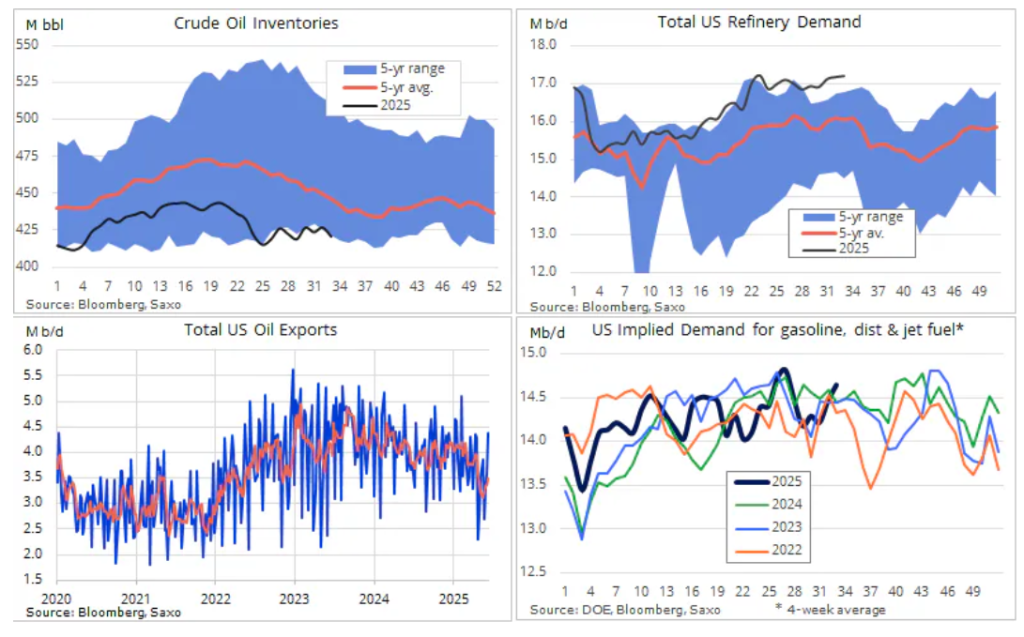Crude oil prices gained momentum on Thursday, weighed down by steep losses in the previous trading sessions but supported by a steeper-than-expected decline in US crude inventories, indicating strong demand in the world’s largest oil consumer. Brent crude futures added 85 cents, or 1.28%, to 67.00 a barrel, and West Texas Intermediate (WTI) added 33 cents, or 0.53% to 63.00 per barrel by the midmorning session.
The latest Energy Information Administration (EIA) report indicated a decrease in US crude stocks by 6 million barrels, the steepest one since June. The draw was informed by the highest seasonal level of refinery runs since 2019, as well as higher exports (4.38 million barrels per day) for the past four months. There was also strong demand in the refined products, especially in jet fuel, which rose to a four-year seasonal peak of 1.9 million barrels per day. These signals contributed to price reinforcement that was a short-term support to price levels despite the bearish sentiment.

The generally altered market situation is still pessimistic. Traders also keep an eye on geopolitical events in the war between Russia and Ukraine. Moscow has opposed the initiative by Western powers to broker guarantees of its security without its input and has remained under sanctions on Russian crude.
In the meantime, US President Donald Trump added a 25% tariff on Indian products in retaliation for New Delhi commissioning Russian crude oil, and the EU sanctioned Nayara Energy, an Indian refiner associated with Rosneft. Indian refiners had been reluctant to take on new Russian cargo, but rising significant discounts have convinced them to do so in September and October.
On the supply side, OPEC+ is in the process of scaling back on previous voluntary production modalities and is increasing supply by almost 2.5 million barrels per day in 2021. As global demand softens, analysts fear that there may be an oversupply in Q4 and beyond. Although the International Energy Agency is forecasting that the highest levels of production will remain in the next year, there are doubts since high-cost producers will ultimately reduce production if prices decline sharply.
The speculative sentiment remains fragile. The speculative positioning in WTI futures is now at multi-decade lows, leaving the market at risk of a sharp short-covering rally should more extractions continue to occur and protection levels hold.
In general, oil markets are squeezed between bullish fundamentals consisting of strong American demand, robust refiner activity, and geopolitical uncertainties, and longer-term negative influences that include OPEC+ supply gains and a decelerating global demand. Brent has settled around $65, and WTI at $62, hovering in what seems to be a range trading environment, awaiting a breakthrough event, whether in geopolitical terms or at the demand side.


